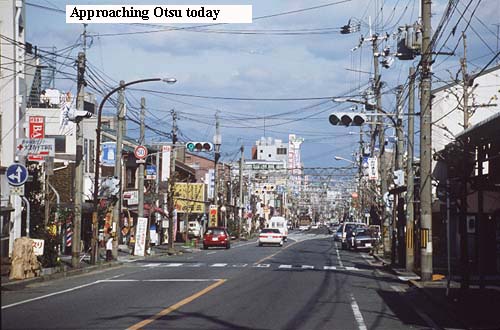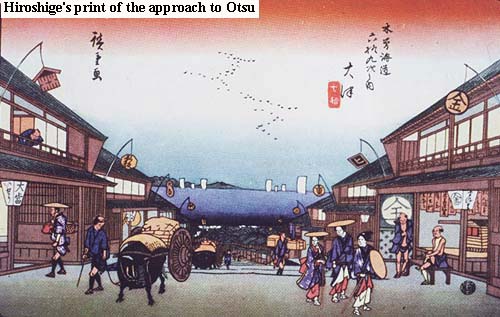The name Osaka Toge means ‘pass (toge) at the place where people met and departed’. It was common practice in the Edo period for travelers to be accompanied by their friends for a while as they departed on a journey, or to be met as they neared their destination. The barrier station at Osaka Toge was the place where, traditionally, such good-byes and greetings took place, as recorded in a poem by Semimaru:
The stranger here from distant lands,
The friend his home-bound friend may greet,
For on this hill the barrier stands,
The gate where all must part and meet.
Half a mile below Osaka Toge, Route 1 National Highway and the Meishin Expressway turn east to by-pass the built up area of Otsu. The old Nakasendo re-emerges from under the modern tarmac to continue straight on into the town. During the Edo period travelers had the option here to take a boat across Lake Biwa for part of the way, instead of walking around the lake. By following the road all the way to the lakeshore, travelers could board a ferry at Hamaotsu (Otsu port), to take them to Seta, Kusatsu, or Hikone. The boat to Hikone was expensive, but could save a whole day’s travel on foot. In the Meiji period, a steamboat service was opened to take travelers even further north, to Maibara, in just eight hours.
For those travelers not taking a boat, the old Nakasendo turned right before reaching Hamaotsu, to enter the post-town of Otsu. Hiroshige’s print of Otsu in his ’69 views of the Kiso Kaido’ series was drawn on this spot, looking down the hill towards the port.

Otsu Today


